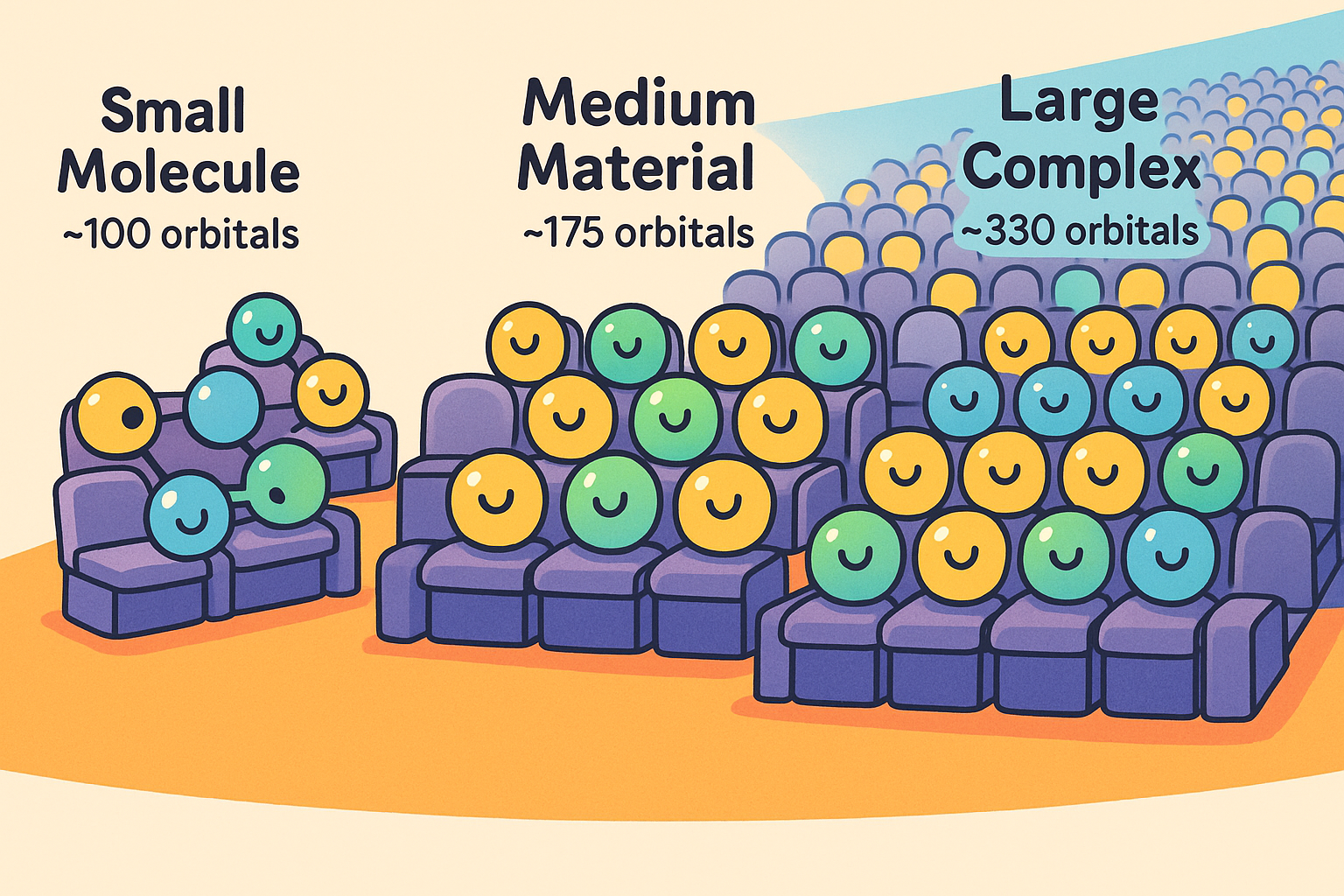Why Orbital Count Matters
More orbitals mean a better description of electrons, which translates into more accurate predictions of reactions, materials properties and drug efficacy.

Imagine a molecule as an auditorium and its electrons as concert‑goers. Each orbital is a seat where an electron might sit. If you want to know how the crowd behaves – who is interacting with whom, how the music changes the mood – you need to know who is sitting in each seat and how they influence each other. This is the essence of quantum‑chemistry simulation. The more seats you can model, the more realistically you can predict chemical properties.
#How many seats do we need?
A small organic molecule might have a handful of orbitals, while transition‑metal complexes or battery materials can have dozens or even hundreds. In research collaborations, teams often choose only a subset of these seats – an active space – to fit within the limits of current quantum computers and classical simulators. Here are a few examples to illustrate the scale[1][2][3]:
Why not just include all the seats? Because the cost of simulation grows exponentially with the number of orbitals. Classical computers struggle beyond a few dozen orbitals, and even quantum computers face limitations. As IonQ notes, the computational cost of classical modelling grows exponentially with the number of electron orbitals, while quantum computers can encode this exponentially growing state space into a linearly growing number of qubits. However, today’s quantum devices have at most a few dozen high‑quality qubits, so researchers must choose an active space and treat the remaining orbitals approximately.
#What we’re doing about it
Our company builds tensor‑network software that simulates quantum chemistry on classical hardware. Each improvement in our code increases the number of “seats” we can handle. We recently jumped from 50 to 88 orbitals thanks to smarter memory management, tensor network methods, and better compression. This means we can simulate larger fragments of catalysts, porous materials or electrolytes in unprecedented detail. It brings us closer to the hundreds or thousands of orbitals needed to model full unit cells or complex enzymes. And it gives us a roadmap: continue optimising algorithms and leveraging new hardware so that when fault‑tolerant quantum computers arrive, we’ll know exactly how many seats we need and how best to fill them.
The takeaway is simple: orbital count is a proxy for the realism of a simulation. More orbitals mean a better description of electrons, which translates into more accurate predictions of reactions, materials properties and drug efficacy. Whether you’re a chemist dreaming of new catalysts or someone curious about how quantum computers will shape the future, remember that every extra seat brings us closer to understanding nature at its most fundamental level. Thanks for joining us on this journey!